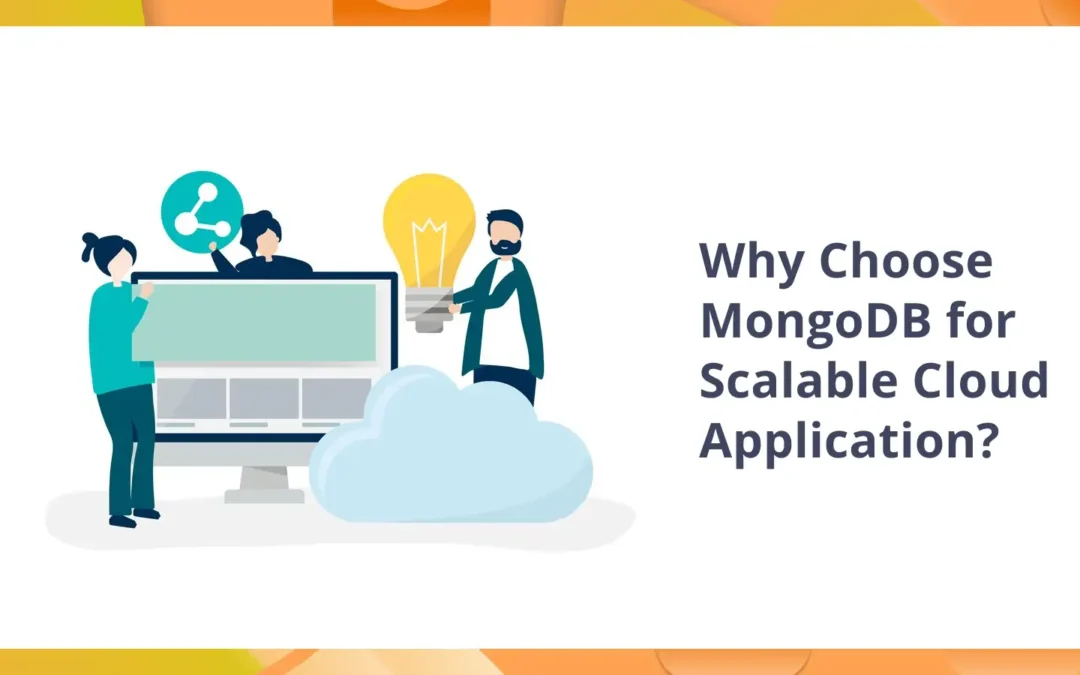The cloud revolution has transformed how we build and deploy applications. Scalability, once a complex feat, is now within reach. But with great power comes great responsibility – choosing the right tools to ensure your applications can handle ever-increasing demands.
This is where MongoDB, the agile NoSQL database, shines in the cloud. Here, we’ll explore how to leverage MongoDB’s strengths and cloud features to build applications that scale seamlessly with MongoDB in the cloud.
Why Build Scalable Applications?

The cloud offers a plethora of benefits: pay-as-you-go pricing, on-demand resources, and global reach. But these advantages truly come alive when your application can scale effortlessly with MongoDB to meet user growth, traffic spikes, and data surges. Building scalable applications ensures:
- Uninterrupted User Experience: A scalable application can handle increased user load without compromising performance or response times. This translates to a smooth and enjoyable user experience, even during peak usage periods.
- Cost Efficiency: Cloud resources scale automatically, eliminating the need to over-provision infrastructure to handle potential spikes. This translates to cost savings, as you only pay for the resources you use.
- Future-Proofing Your Application: Building with scalability in mind ensures your application can adapt to evolving needs and unforeseen growth. It’s like constructing a building with a strong foundation that can accommodate additional floors in the future.
MongoDB in the Cloud

MongoDB’s inherent scalability features make it an ideal choice for cloud-based applications. Here’s how it empowers you to build for the future with scalable MongoDB deployments:
- Horizontal Scaling: As your data grows, MongoDB allows you to horizontally scale by distributing data across multiple servers (shards). This distributes the load, ensuring your database can handle increasing data volume without performance degradation.
- Automatic Provisioning: Cloud providers like AWS, Azure, and GCP offer managed MongoDB services. These services automatically provision and manage your database resources, freeing you to focus on application development.
- Elastic Scaling: Cloud-based MongoDB deployments can scale resources (CPU, RAM) up or down dynamically based on real-time requirements. This eliminates the need for manual intervention and ensures optimal resource utilization for scalable MongoDB applications.
Building for Scale: Practical Considerations with MongoDB in the Cloud

Now that we understand the “why” and “how” of scalability with MongoDB in the cloud, let’s delve into practical considerations for building truly scalable applications:
- Data Modelling for Scalability: A well-designed data model is crucial for maximizing scalability. Consider factors like denormalization for frequently accessed data and shard key selection for efficient data distribution across shards in your MongoDB cloud database.
- Partitioning Your Data: Partitioning your data allows for targeted queries and improved performance. Utilize sharding keys strategically to partition data based on access patterns and ensure even distribution across shards for optimal cloud-based MongoDB performance.
- Monitoring and Optimization: Cloud-based monitoring tools provide valuable insights into your application’s performance. Actively monitor resource utilization, query execution times, and identify potential bottlenecks. This allows you to proactively optimize your application and database configuration for continued scalability of your MongoDB cloud applications.
Beyond the Basics: Advanced Techniques for Peak Scalability with MongoDB in the Cloud

For those seeking to push the boundaries of scalability, consider these advanced techniques for your cloud-hosted MongoDB deployments:
- Caching: Implement caching strategies within your application to store frequently accessed data in memory. This reduces the load on your database server and improves response times for common queries in your MongoDB cloud database.
- Database Replication: Replicate your MongoDB database across multiple cloud regions for increased disaster tolerance and improved availability. This ensures your application remains accessible even if a single region experiences an outage in your MongoDB cloud environment.
- Asynchronous Processing: Utilize asynchronous processing techniques to handle long-running tasks or data processing jobs. This prevents these tasks from blocking your main application thread and impacting scalability of your MongoDB cloud applications.
The Final Ascend: A Scalable Journey with MongoDB in the Cloud

Building scalable applications with MongoDB in the cloud is an ongoing journey. By understanding the core concepts, implementing best practices, and continuously monitoring and optimizing your system, you can ensure your application scales gracefully to meet any challenge the future throws its way.
Remember, scalability is not a destination, but a continuous ascent – and with MongoDB as your trusted companion, you’re well-equipped to reach the peak for your scalable cloud applications built with MongoDB.
Additional Resources:
